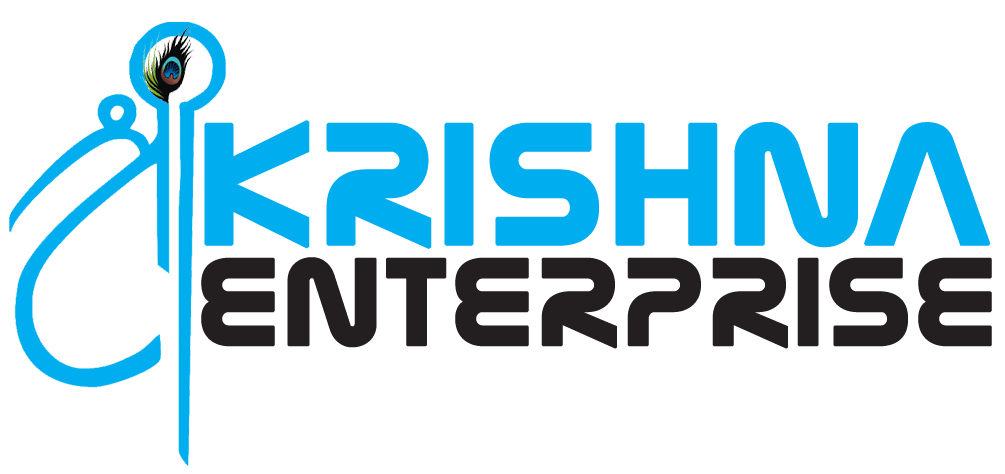1. Introduction: The Enduring Legacy of Ancient Egypt
Ancient Egypt stands as one of the most influential civilizations in human history, renowned for its monumental architecture, sophisticated art, and complex religious beliefs. The cultural footprint of Egypt extends beyond its historical period, inspiring modern art, architecture, and spiritual concepts. Understanding the symbols, myths, and practices of this ancient society offers valuable insights into how they shaped their worldview and how these elements continue to influence contemporary creativity.
This article explores the deep connection between ancient Egyptian traditions and modern ideas, exemplified by creative projects like the extra bonus game chance. While “Sunlight Princess” is a modern illustration, it embodies timeless themes rooted in Egyptian symbolism—namely divinity, natural power, and eternal life—demonstrating how ancient principles can inspire current artistic expressions.
Quick Navigation
- Core Concepts of Ancient Egyptian Culture and Beliefs
- Symbolism and Mythology in Ancient Egypt
- Royal Practices and Their Modern Parallels
- Preservation and Discovery: Lessons from Archaeology
- From Ancient Symbols to Modern Inspirations
- Non-Obvious Depths: Cultural Continuity and Innovation
- Modern Inspirations Derived from Ancient Egypt
- Conclusion: Bridging Past and Present
2. Core Concepts of Ancient Egyptian Culture and Beliefs
a. The role of gods with animal heads in representing divine qualities
Ancient Egyptian religion was deeply symbolic, with deities often depicted with animal heads that embodied specific virtues or natural elements. For example, Anubis, with a jackal head, symbolized mummification and the afterlife, emphasizing protection and transformation. Bastet, depicted as a lioness or a domestic cat, represented home, fertility, and protection. These animal-headed gods served as visual metaphors, linking the natural world with divine attributes, a concept that remains influential in modern spiritual and artistic representations.
b. The significance of divine bloodlines and royal marriage customs, including sibling marriages
Royal lineage was considered sacred in Egypt, with pharaohs often marrying their siblings to preserve divine bloodlines. This practice reinforced the idea of divine legitimacy, connecting rulers directly to gods. For instance, the marriage of Pharaoh Ramses II to his sister Nefertari exemplifies this tradition. Such customs reflected a belief that maintaining pure divine blood ensured stability and spiritual authority, concepts that continue to influence modern ideas of monarchy and legitimacy in different cultures.
c. Preservation and longevity: Exploring the resilience of ancient substances like 3000-year-old honey
The Egyptians excelled in preservation techniques, evident in artifacts like mummies and preserved foods. Remarkably, scientists have discovered edible honey in ancient tombs, dating back over 3000 years. This resilience highlights their advanced understanding of natural preservatives and environmental control, principles that influence modern preservation methods in science and medicine.
3. Symbolism and Mythology in Ancient Egypt
a. How gods with animal heads embody specific virtues and natural elements
The Egyptian pantheon used animal symbolism to personify virtues; for example, the falcon-headed Horus represented kingship, vision, and protection. The crocodile-headed Sobek embodied strength and fertility, linking the Nile’s life-giving waters to divine power. These symbols provided a visual language that communicated complex spiritual ideas, an approach that continues to inspire modern iconography and branding, where animals symbolize strength, agility, or wisdom.
b. The mythological narratives that underpin royal authority and divine right
Mythologies surrounding gods like Osiris and Isis established the divine right of kings, portraying the pharaohs as earthly embodiments of divine order. The myth of Osiris’s death and resurrection symbolized renewal and eternal life, reinforcing the idea that rulers derived their authority from divine principles. These stories continue to influence contemporary narratives of legitimacy and leadership, demonstrating the enduring power of myth in shaping societal values.
c. Comparing ancient symbolism with modern interpretations in art and literature
Modern artists and writers often draw inspiration from Egyptian symbolism, reinterpreting motifs like the scarab or the Eye of Horus to explore themes of protection, rebirth, and eternity. For example, contemporary jewelry design frequently incorporates scarab motifs, while literature may reference Egyptian myths to symbolize resilience or divine inspiration. This dialogue between past and present enriches cultural expression and underscores the timeless relevance of Egyptian symbolism.
4. Royal Practices and Their Modern Parallels
a. The concept of divine lineage and its influence on leadership models today
The Egyptian emphasis on divine bloodlines laid the foundation for the idea that leadership is rooted in spiritual legitimacy. Today, political and religious leaders often invoke lineage or spiritual authority to legitimize their power. Monarchies, for instance, still emphasize royal bloodlines, echoing ancient Egyptian practices that linked divine favor with hereditary rulership.
b. Historical marriage customs among pharaohs as a reflection of spiritual legitimacy
Marriages among Egyptian royalty served as political and spiritual alliances, reinforcing the divine right of rulers. Such customs, though less common today, influence modern notions of strategic alliances through marriage in royal families and political elites, symbolizing continuity and legitimacy.
c. Modern fascination with royal bloodlines inspired by ancient practices
Contemporary media and popular culture often romanticize royal bloodlines, emphasizing purity and divine right. Films, literature, and branding frequently utilize imagery reminiscent of Egyptian royal symbolism to evoke notions of power, legitimacy, and timeless authority.
5. Preservation and Discovery: Lessons from Archaeology
a. The significance of uncovering ancient artifacts and their insights into daily life
Archaeological excavations reveal invaluable details about ancient Egyptian society—from daily routines to religious practices—deepening our understanding of their worldview. Artifacts like pottery, jewelry, and texts serve as tangible links to the past, helping modern scholars decipher the complexities of ancient life.
b. The discovery of edible honey from 3000-year-old tombs and its implications for understanding ancient preservation techniques
The finding of preserved honey in Egyptian tombs demonstrates their advanced knowledge of natural preservatives and environmental controls. Honey’s remarkable longevity—still edible after thousands of years—illustrates ancient techniques that can inspire modern food storage and preservation science.
c. How modern science continues to unravel ancient mysteries
Techniques like DNA analysis, radiocarbon dating, and chemical analysis allow scientists to unlock secrets from ancient artifacts. These methods have provided insights into Egyptian diets, health, and environmental conditions, fostering a deeper appreciation of their ingenuity and resilience.
6. From Ancient Symbols to Modern Inspirations: The Case of Sunlight Princess
a. The conceptual link: sunlight as a divine and life-giving force in both ancient and modern contexts
Sunlight has always symbolized vitality, renewal, and divine power across cultures. In ancient Egypt, the sun god Ra represented creation and life force, with temples oriented to capture its rays. Modern artists often draw on these themes, viewing sunlight as a metaphor for inspiration, enlightenment, and spiritual energy—embodying the timeless human connection to natural power.
b. “Sunlight Princess” as a modern artistic inspiration rooted in ancient themes of divinity and natural power
The phrase “Sunlight Princess” encapsulates an archetype of illumination, vitality, and sovereignty—concepts deeply rooted in Egyptian symbolism. This modern motif echoes the divine authority of queens like Nefertiti or Hatshepsut, who were often associated with the sun’s radiance. Such themes are woven into contemporary art and storytelling, emphasizing the enduring appeal of ancient ideals of divine femininity and natural energy.
c. Examples of contemporary media and art drawing from Egyptian symbolism and mythology
Films like “The Mummy” and artworks inspired by Egyptian motifs showcase how ancient symbols like the scarab, the Eye of Horus, and the lotus continue to resonate. Modern branding, fashion, and digital art frequently incorporate these elements to evoke notions of protection, rebirth, and eternity—demonstrating how ancient narratives are continually reinterpreted to inspire current cultural expressions.
7. Non-Obvious Depths: Cultural Continuity and Innovation
a. Exploring how ancient Egyptian motifs influence modern fashion, architecture, and branding
Designers and architects often incorporate Egyptian motifs—such as hieroglyphic patterns, pyramid shapes, and regal color schemes—into contemporary products. For example, luxury brands frequently use scarab symbols or stylized obelisks in their logos or packaging, blending ancient symbolism with modern aesthetics to evoke sophistication and timelessness.
b. The reinterpretation of divine animal-headed gods in contemporary iconography
Modern reinterpretations of gods like Anubis or Bastet appear in video games, movies, and fashion, often stylized to symbolize attributes such as protection, mystery, or power. These adaptations serve as visual metaphors that connect current audiences with ancient ideas, making them relevant in new cultural contexts.
c. The role of ancient practices in shaping modern concepts of purity, longevity, and vitality
Practices like mummification and natural preservation influence contemporary health and beauty industries—think of skincare products emphasizing purity and longevity. The ancient Egyptian pursuit of vitality continues today through innovations in wellness, bioengineering, and sustainable living, showing how historical ideals persist in modern innovation.
8. Modern Inspirations Derived from Ancient Egypt
a. Innovations in design and storytelling inspired by Egyptian themes
Contemporary architects design structures reminiscent of pyramids and obelisks to symbolize strength and timelessness. Writers craft stories that incorporate Egyptian myths, enriching narratives with themes of rebirth, divine authority, and eternal life, demonstrating how ancient stories continue to inspire modern storytelling.
b. The integration of ancient symbolism into modern products and cultural narratives
From jewelry to home decor, Egyptian motifs are integrated to evoke mystery and elegance. Brands like luxury watches or fashion lines utilize hieroglyphic-inspired designs, connecting consumers with the ancient allure of divine power and longevity.
c. Case study: The “Sunlight Princess” as an embodiment of ancient ideals reimagined for today
“Sunlight Princess” exemplifies how ancient themes of divine femininity and natural energy can be adapted into modern cultural symbols. It embodies the enduring human fascination with illumination, vitality, and sovereignty—principles that have guided civilizations for millennia and continue to inspire contemporary creators.
9. Conclusion: Bridging Past and Present for Future Inspiration
“The ancient world offers a wellspring of symbols and ideas that resonate deeply within modern culture, proving that understanding our history can unlock creative potential for the future.”
As this exploration illustrates, the enduring influence of ancient Egyptian culture is evident across art, architecture, and societal practices. By studying their symbols, myths, and customs, modern creators can draw inspiration that bridges millennia, fostering innovation rooted in timeless principles. Embracing this connection not only enriches our cultural landscape but also fuels future advancements—reminding us that history is a vital resource for ongoing creativity.


